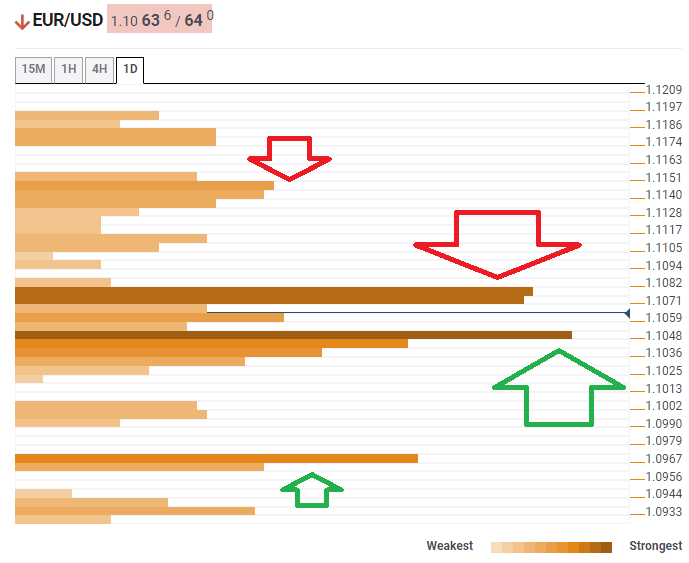EUR/USD locked in tight range but set to explode on Fed Day – Confluence Detector
EUR/USD is trading above 1.10 as markets gear up for the all-important decision by the Federal Reserve. The world's most popular currency pair is locked in a tight range but may explode when the central bank decides.
The Technical Confluences Indicator is showing that EUR/USD is capped at around 1.1075, where a dense cluster of lines awaits it. That includes the Bollinger Band 15min-Upper, the Fibonacci 38.2% one-month, the previous daily high, the Simple Moving Average 50-15m, the SMA 10-1h, the Fibonacci 23.6% one-month, the SMA 10-1h, and more.
Further above, it faces only weak resistance. The initial target could be 1.1151, which is the convergence of the Fibonacci 61.8% one-month, the Pivot Point one-week Resistance 1, and the BB 1d-Upper.
Looking down, significant support awaits at 1.1048, where a juncture of levels awaits it: the SMA 50-4h, the SMA 10-1d, the Fibonacci 38.2% one-day, the SMA 5-1d, the SMA 100-15m, the SMA 100-1h, and the Fibonacci 38.2% one-week.
If it falls below this level, the next downside target is 1.0967, which is the convergence of the previous monthly low, the BB 1d-Lower, and the PP 1d-S2 awaits it.
Here is how it looks on the tool:

Confluence Detector
The Confluence Detector finds exciting opportunities using Technical Confluences. The TC is a tool to locate and point out those price levels where there is a congestion of indicators, moving averages, Fibonacci levels, Pivot Points, etc. Knowing where these congestion points are located is very useful for the trader, and can be used as a basis for different strategies.
This tool assigns a certain amount of “weight” to each indicator, and this “weight” can influence adjacents price levels. These weightings mean that one price level without any indicator or moving average but under the influence of two “strongly weighted” levels accumulate more resistance than their neighbors. In these cases, the tool signals resistance in apparently empty areas.
Learn more about Technical Confluence
